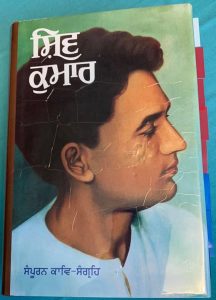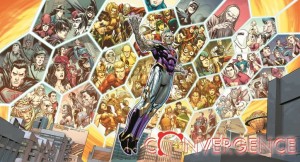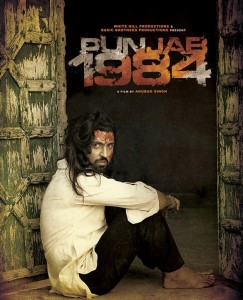Few years back, I decided to take some writing workshops, to learn and collaborate on how to write. The classes I joined were called prompt writing workshops, where we would be given few prompts, and some time to write a piece that would use those prompts. I really had fun in these workshops. As I was going through my bookshelf, I found the notebook where I wrote all these pieces. So here they are, some of the stories that came about from my mind. You may find these stories to be incomplete, but these are some of the starting points of many long stories that are in my mind. The prompts that were given are in bold.
Here is the first piece, Oubliette – A Mind Prison.
Apocalypse has not been reached yet, but we were surely moving towards it. The fall of the major democracies around the world had caused a domino effect, innocent revolutions at first, but soon they were at a scale, that the republics that remained were not able to face without being eradicated.
In 2047, the republics had shrunk pretty much to the European sub-continent or the North Americas. Europa was in a unique position. The high Hindu Kush on the east had created difficult for the revolutionaries to cross over without the fuel. The three wars fought on the mountain terrain had weakened the Asian revolutionaries. The environmental changes had made Saharan region to be the toughest desert on earth. The cold and dry Hindu Kush on the east, hot and unforgiving Sahara in the south and Atlantic on the other sides, had secured few more years of survival for Europa.
Then there were the few who still believed in the idea that a single human mind can change the course of history fought long and hard. In between the fights, they looked towards the stars in a hope of finding a better peaceful world. Among them was Pierre Mogambo – 2078 Nobel Laureate, and the world foremost authority in neuro-science and quantum physicist.
Mogambo, as he preferred to be called, joined Cern in 2047, at a young age of 21. His papers on the quantum physics had caused a stir in the scientific community. His work advanced the creation of miniaturized quantum computers, which would fit the palm of one’s hand. Over time, the size became small enough that the most powerful self-learning computer could be powered by the light, heat or batteries if one prefers. The tiny quantum machines were perfected overtime to become artificially intelligent, and Mogambo collaborated with the neuroscientists to create world’s first computer that could emulate the complexity and intelligence of a human brain.
Around the same time, the resources around the world were depleting at an alarming rate and the jihadist revolutionaries started to look at the two republic land masses. The psychologists were trying to understand what was causing this phenomenon that changed the collective human conscience from saving the world to pretty much destroying it. And for that, Mogambo’s artificial brain was used to emulate the behavior patterns.
As scientists worked with the artificial brain, scientists started to see how the human brain is capable of forming new neuropaths. Understanding neuropaths and structures also helped Mogambo to understand how can one create ways to prevent the new neuropaths from being created, and that is what led to his Nobel prize winning invention – oubliette, a mind prison.
~~~ 1 ~~~
World was uniform. People were quiet, peaceful, and happy. Even in this perfectly manicured public park, Charles found them bound, not free.
Charles de Lint was a free soul. Dressed in one of his old time tweed three-piece suits, he always stood out of the crowd. He had a collection of those tweed three-piece suits in his apartment. The colors, he thought, I love the colors. Where are the colors? Maybe that’s why … and then he lost the train of his thought.
The peace was reached in 2084, but Charles didn’t know much about it. The times he could sleep is when the dreams would come, and went away as soon as they came leaving a sense of void inside him. Charles de Lint was a free soul.
“Charlie boy, nice suit,” came the voice from behind. Charlie had heard that voice before. The vibration seemed to be familiar to his ears.
Charlie turned, and saw a stout man walking towards him. He was wearing the simple, functional overalls, like everyone else. They were brown in color, and the front was flat, without any buttons or zippers. They were all along the side.
At least it is not the white that I see everywhere. Bill … Bob … No, No … His pupils dilated … Benito … and then his pupils contracted as if the sun had shone on them. Caretaker.
“How are you on this fine day, Magician”, Benito was still walking towards him. His eyes never left Charles, as if the gaze had frozen Charles in space and time.
That is what I was called, The Magician. And just like that, he lost his train of thought.
“I am well, Caretaker. It sure is a fine day. Is spring here already?”
“O yeah, spring started last week. Got to get those pastel three-pieces out, Charlie boy. And call me Ben.”
“All right … Ben. I was … I was just headed over to the Museum of Saturn. I heard they brought the fragment from the asteroid which is heaviest matter known to us.”
“Yeah, I heard it too”, Benito was standing next to Charles, looking at him curiously.
“Something I said?” Charles asked, Caretaker.
“No, no, no, no. Charlie boy”, Benito gave a hearty laugh, but it never reached his eyes. “You need to get those pastels out. It is spring”. He said, waving his hand at the blue skies, and then at the lush green grass. “Well, I should head out. I have an appointment. Good running into you. Glad you are doing OK”.
“Yeah.” Yeah.
Benito took the glasses out of his pocket, placed it one his face and plugged the earplugs. Charles heard faintest vibrations of sound. Benito gave an informal salute, his lips curled in a smile and turned to walk towards the park gate. Charles thought he heard him say … Nah …
~~~ 2 ~~~
“I can see it in your eyes, Negotiator”, Charles was saying, “In all of your eyes”.
Hundreds of tubes faced towards him. There was nothing around them, just dark. The tubes were protruding out of the big globe, suspended in the air, like a pin-cushion. Wait … What?
Each tube had an eye at its end, glowing different shades of red, and they were all facing him now. For a microsecond, Charles caught a movement on the edge of his left eye – one of the antenna tubes quivered. And then the thoughts left him.
When he woke up, he was in his studio apartment. How long have I been asleep? He got out of his bed and walked towards the corner kitchenette. Did I dream? Again?
Ben said pastels. He poured a glass of orange juice. He took the first sip. Pastels, I should wear pastels. It is spring.
In few seconds, he had crossed his room and standing in front of his closet, full of three-piece suits. He took out the nice light gray three-piece suit. I wonder, if they will find me … interesting. After all this is gray.
He gently placed the suit on the bed, and headed into the shower.
“Good Morning Charles, on this fine day of spring. It is April, 29th, 2114. What would you like me to put on”, said female voice.
“Put on The Beatles. Hard Day’s night.”
“Going old school? Here are The Beatles”.
And Charles relaxed to sounds almost 150 years old.
Jatinder PS Nagi
Copyright March 29, 2014
 Shiv Kumar Batalvi’s poetry stands for it’s heightened passion, separation and lover’s agony. He is indeed Birha da Sultan – the king of separation of a beloved. He has dived into the abyss of pathos and put it in words that have inspired both the lovers and the lovers of Punjabi language.
Shiv Kumar Batalvi’s poetry stands for it’s heightened passion, separation and lover’s agony. He is indeed Birha da Sultan – the king of separation of a beloved. He has dived into the abyss of pathos and put it in words that have inspired both the lovers and the lovers of Punjabi language. A few months back, as I started to pluck the strings of the guitar, once again Shiv’s poetry beckoned and I looked up to a more modern rendition of my all-time favorite poem – “Ishtihaar“. It is also sometimes called “Ikk Kudi“. The song has been arranged in musical notes by likes of Rabbi Shergill, Hans Raj Hans, and classic, Mahender Kapoor’s version. I had to find a version that a novice guitar player like me could play easily. And I found just the one from the movie Udta Punjab. It is sung by Diljit Dosanjh, with music by Amit Trivedi.
A few months back, as I started to pluck the strings of the guitar, once again Shiv’s poetry beckoned and I looked up to a more modern rendition of my all-time favorite poem – “Ishtihaar“. It is also sometimes called “Ikk Kudi“. The song has been arranged in musical notes by likes of Rabbi Shergill, Hans Raj Hans, and classic, Mahender Kapoor’s version. I had to find a version that a novice guitar player like me could play easily. And I found just the one from the movie Udta Punjab. It is sung by Diljit Dosanjh, with music by Amit Trivedi.
![1024full-he--man-and-the-masters-of-the-universe-photo[1]](http://jpsnagi.com/wp-content/uploads/2016/07/1024full-he-man-and-the-masters-of-the-universe-photo1-300x174.jpg)

![MarvelSecretWars[1]](http://jpsnagi.com/wp-content/uploads/2015/07/MarvelSecretWars1-300x161.jpg)



![Redshirts_John_Scalzi1[1]](http://jpsnagi.com/wp-content/uploads/2012/07/Redshirts_John_Scalzi11-200x300.png)
